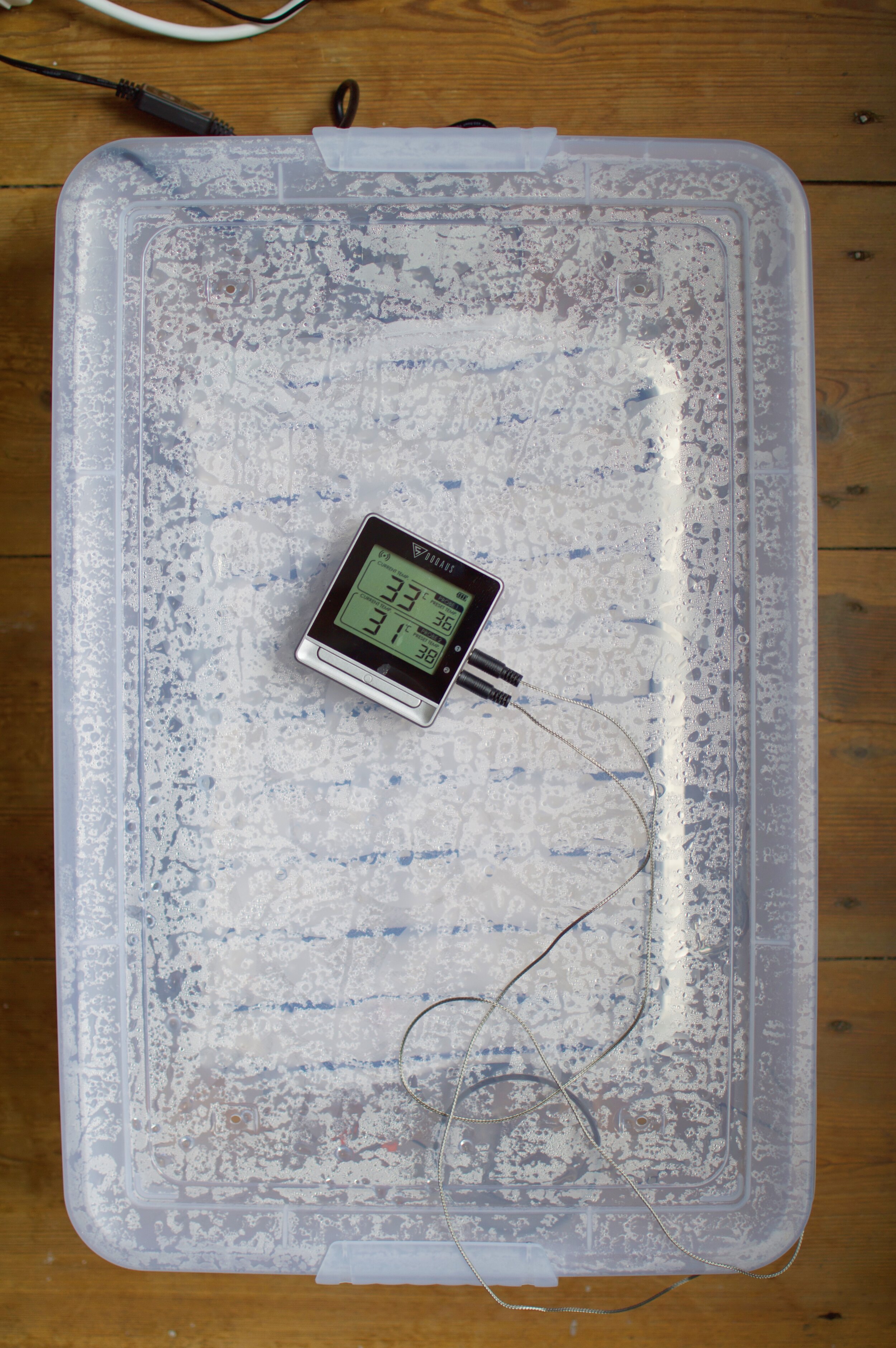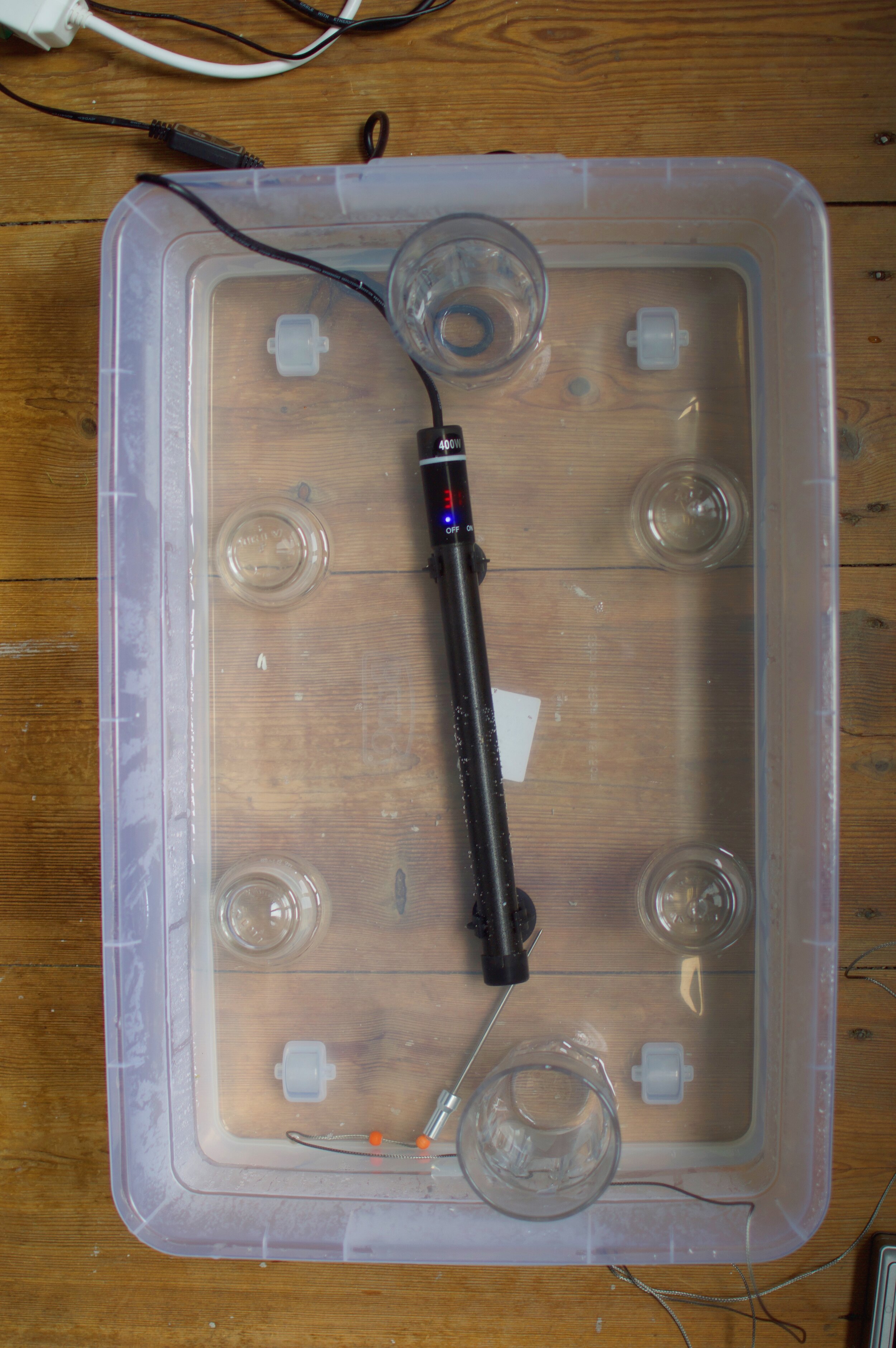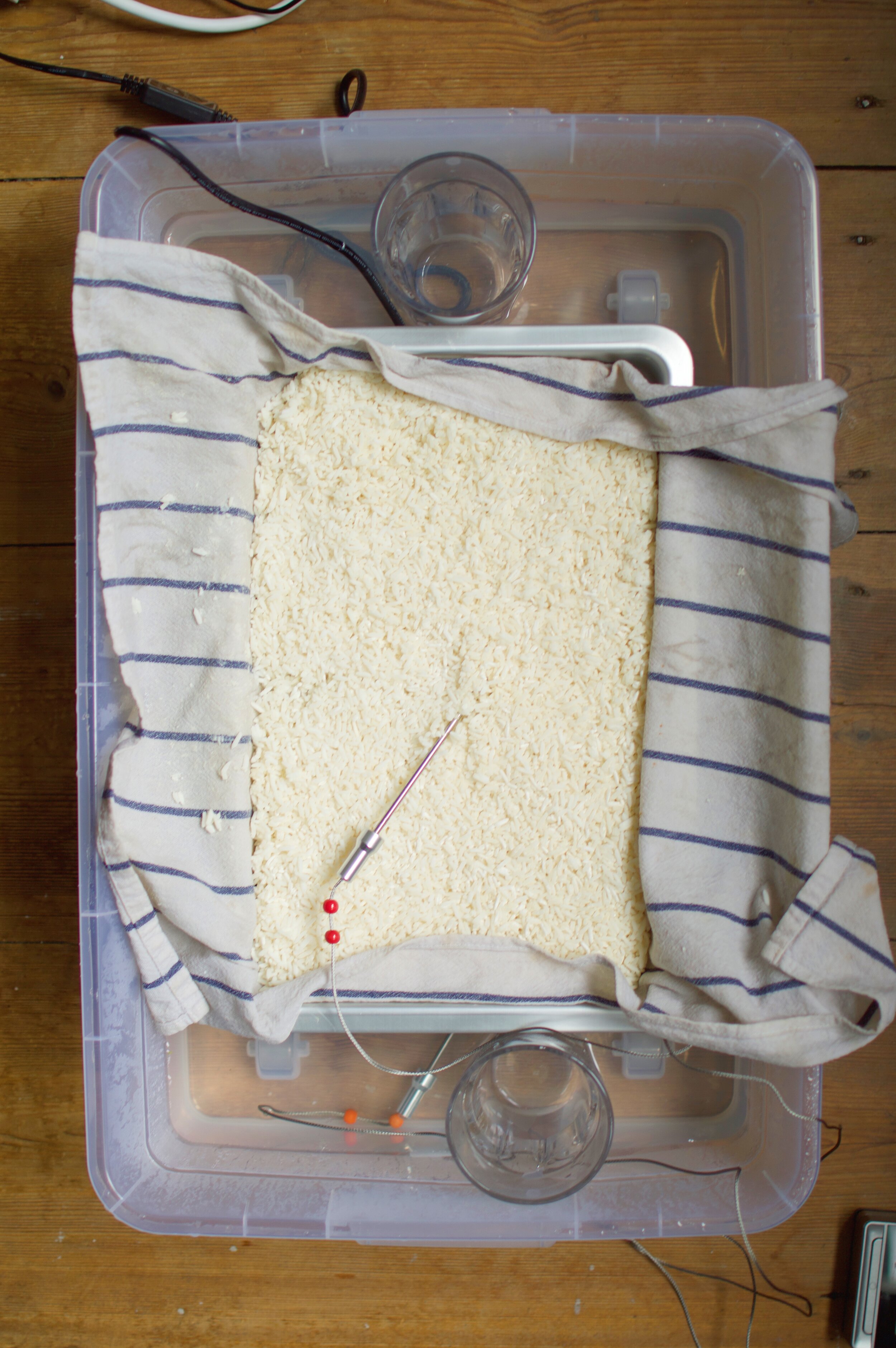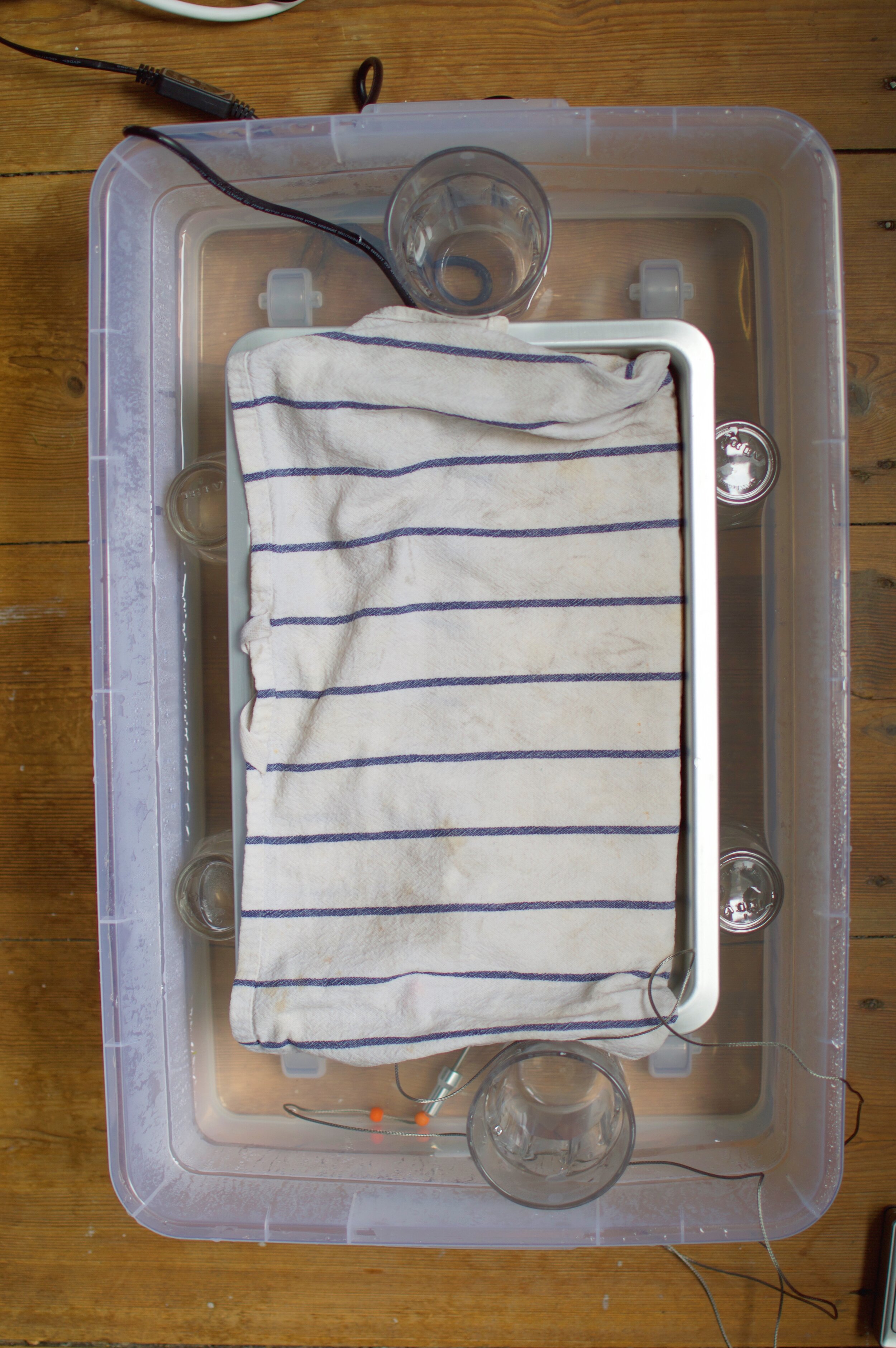This is part of a series on Koji, the magical fungus behind miso and a powerful transforming agent for just about any food. If you haven’t yet, I recommend reading this Intro to Koji first, followed by a few ideas for how to use Koji.
For years, I had fantasized about one day having a dedicated fermentation nook in a fantasized basement, with sturdy shelving, beautiful big jars, and a steady temperature for all types of microbial concotions. The centerpiece of this station, I dreamed, would be an insulated cedar chamber that can hold a perfectly steady temperature and humidity for growing koji, which I had always considered to me the peak level of home fermentation.
It took too long (and a readthrough of Koji Alchemy) to realize that I don’t need to wait for this dream fermentation station to grow koji at home. Koji is a mold, and molds are opportunists. They just like the kind of environment mold tends to creep along best in: warm and humid. People have grown great koji with a cling film wrapped tray by a radiator or on top of a fridge.
In this warm and humid setting, the koji spreads vigorously through the substrate (usually rice), sending filaments of mycelium into it for digestive enzymes to break down the nutritious surroundings. When the environment gets too warm, the koji protects itself by converting to spores, often a different color and with no enzymatic activity and much harsher flavors.
A higher humidity also facilitates strong growth by ensuring the fragile mycelium doesn’t dry out, and that the enzymes can easily break down their surroundings. Humidity also ensures that the ‘substrate’ the koji is growing on remains damp and soft, instead of drying out and becoming too firm for the fungus to penetrate.
Koji is happiest in temperatures between 28C / 82F and 38C / 100F. Any higher than 38 and the koji may sporulate, typically involving a major and unpleasant change in color and flavor.
With this in mind, here’s the basics of what you’ll need for a koji rig:
Heat: aquarium heater, seeding mat, or an oven light -- anything that you can hold steady in the desired range.
Humidity: a source of humidity in the chamber. Could be a tray of water or a small humidifier, or combine the heater and humidifier by warming the chamber via a submerged aquarium heater.
Substrate Tray: last, you’ll need something to place your substrate in, usually a small baking sheet for rice or barley. Ideally, this would be suspended a bit above the heater for more even heating, but not too close to the top of the chamber to avoid condensation dripping directly onto the substrate. It’s nice if the tray is perforated on the bottom as well, to ensure any excess moisture doesn’t pool up for uneven growth.
Now, different home koji makers have accomplished this in a zillion different ways, from IKEA cupboards to ovens to styrofoam coolers. Very likely, you already have everything you need to grow beautiful koji at home today, and it’s probably best to just get started with that; you’ll just need to order some spores! If in the EU, I recommend Fermentation Culture EU. In the US, I’ve read good things about Gem Cultures.
If you do care to build a cheap, simple rig, here’s what I am working with, all put together for under €50.
The foundation of my rig is a simple plastic tub, shallow enough to fit under the bed while not in use. Into the tub goes an aquarium heater and enough water to cover the heater. Next comes a tray, suspended above the water, with a few holes punched in with a screwdriver to ensure humidity doesn’t build up on the bottom. I also purchased a cheap grill thermometer with two probes and a smartphone app to monitor and alert me if temperatures fall out of a desirable range.
The koji and rice get wrapped up in a sanitized IKEA dish towel, and that’s it — a simple, cheap rig that took a €10 tub, a €20 heater, a €25 thermometer and a few odds and ends from the kitchen to hold the rice in place.
That’s all it took for me to get up and running, with five successful batches under my belt thus far. There are many ways to skin a cat or grow mold on rice, so let the takeaway here be that if you want to try growing koji, don’t sit on your hands for months thinking it was too resource- or space-intensive to try.
As you start thinking about warm, humid environments, please feel free to message me on Instagram, or join a Koji community group like The Art of Miso on Facebook or the /r/Koji Subreddit's Discord channel.






